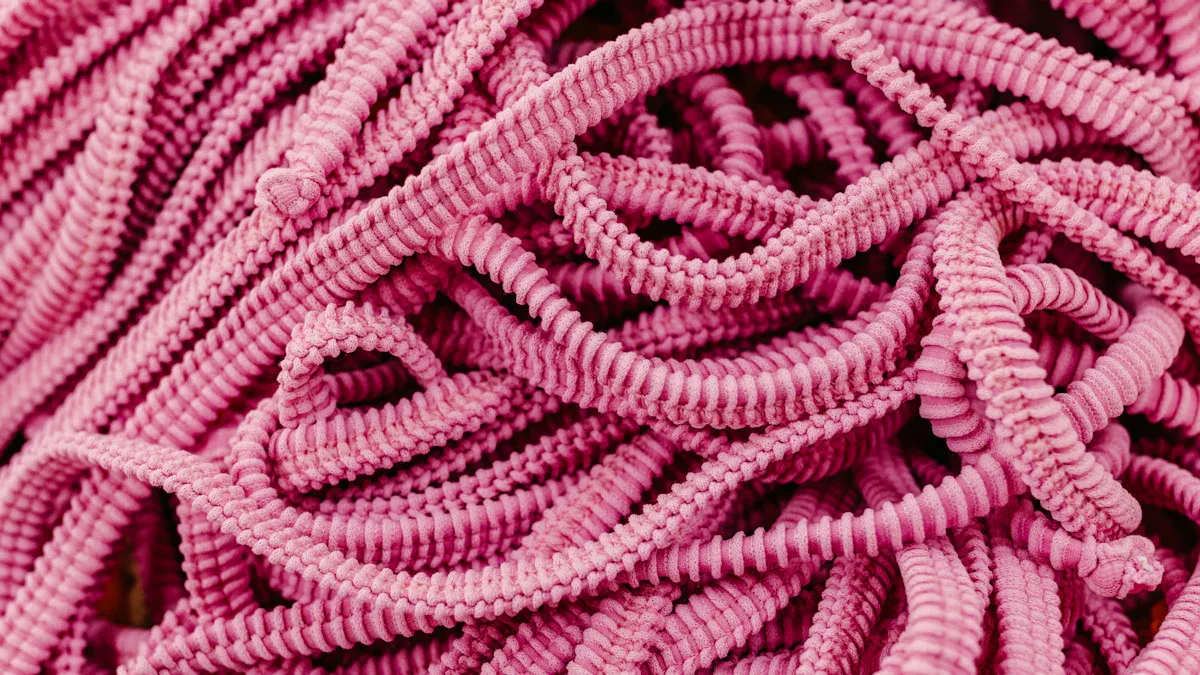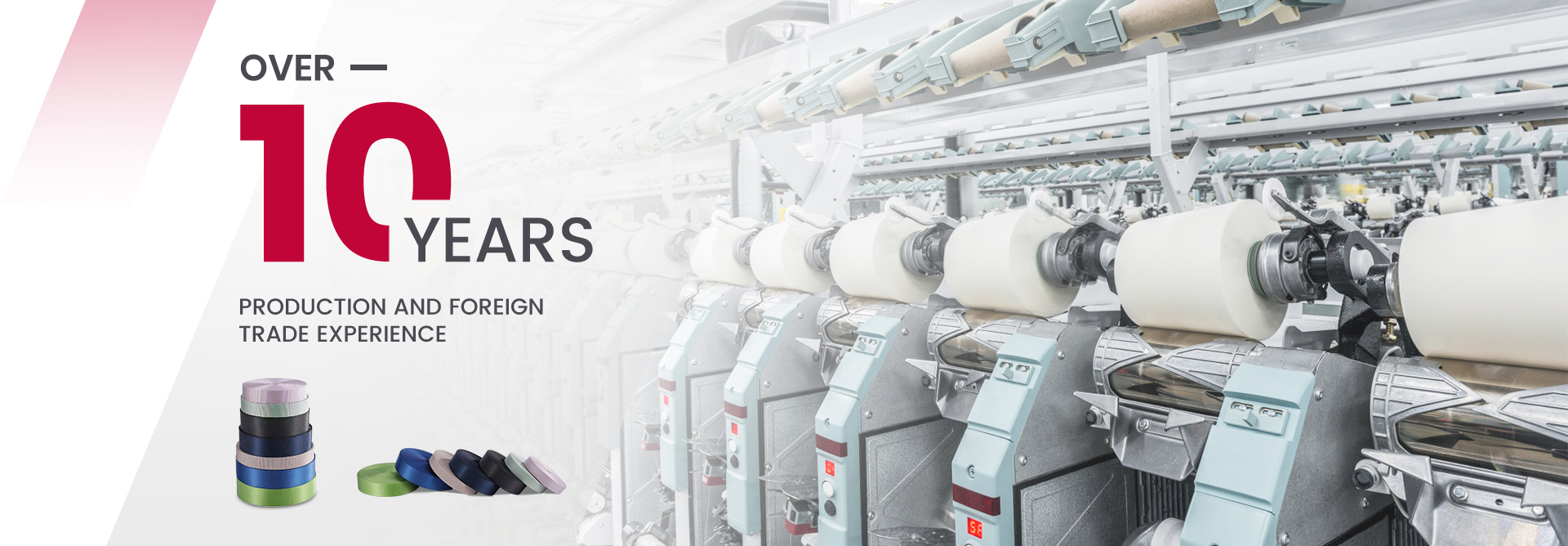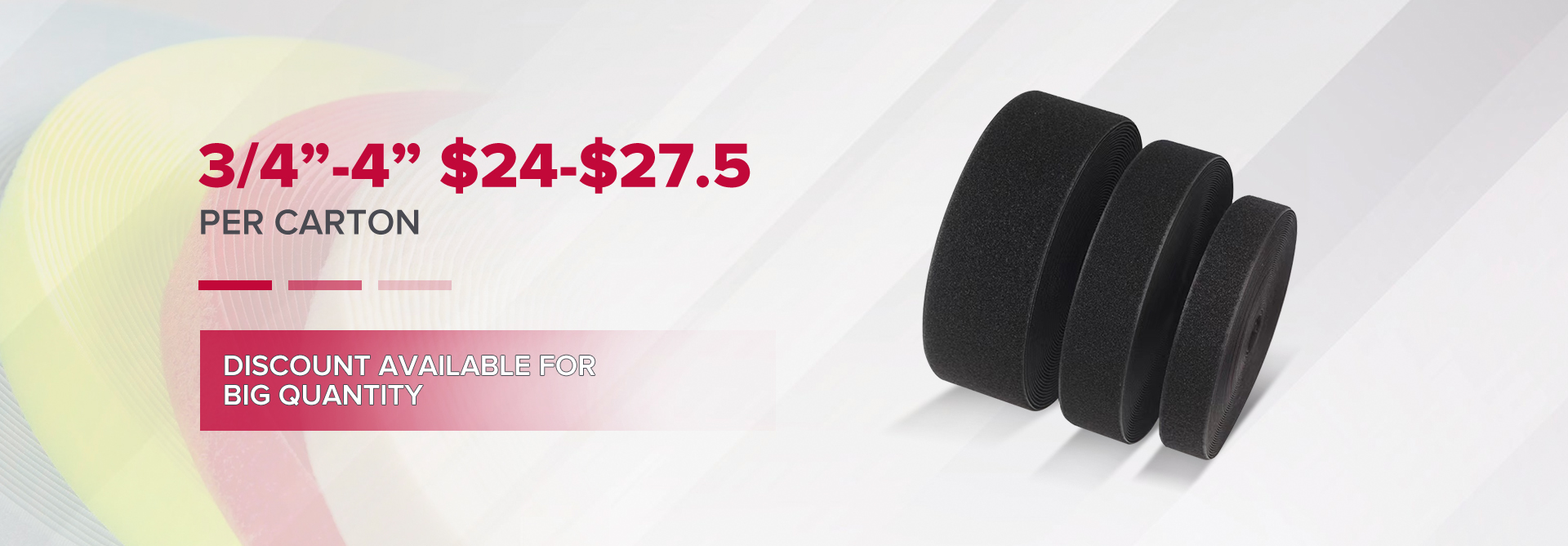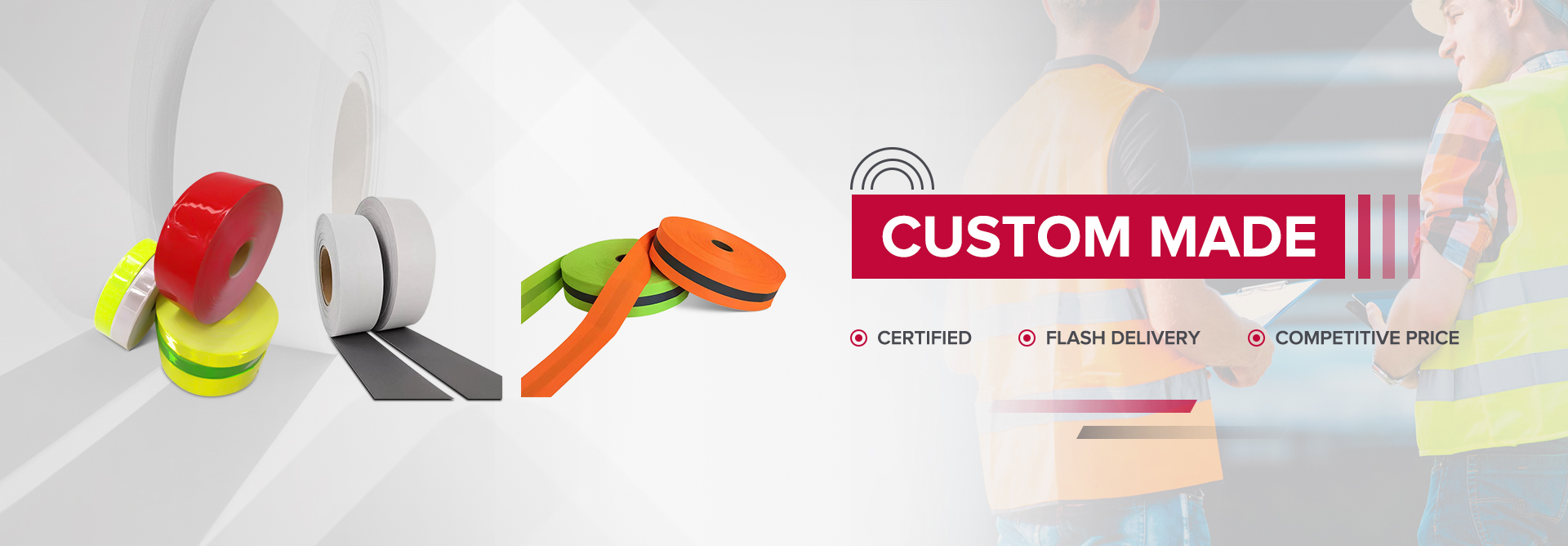
Latex elastic bands offer numerous benefits. They provide muscle strengthening, especially for the elderly, and allow for controlled intensity during exercises. Compared to synthetic rubber and fabric bands, latex elastic braid stands out for its cost-effectiveness and durability. This makes them a preferred choice for many users.
Key Takeaways
- Latex elastic braid is durable and long-lasting, making it a cost-effective choice for crafting and fitness projects.
- Its flexibility allows for a wide range of applications, from garment making to resistance training, enhancing creativity and performance.
- Proper storage and usage practices can significantly extend the lifespan of latex elastic braid, ensuring optimal performance in various projects.
Applications of Latex Elastic Braid

Latex elastic braid finds its way into various applications, showcasing its versatility and effectiveness. I have seen firsthand how this material enhances projects across different fields.
In Crafting
In the crafting world, latex elastic braid serves as a fundamental component. I often use it for garment making, where its stretchability and durability shine. Here are some common applications:
| Application Type | Examples |
|---|---|
| Garment Making | Masks, Clothes, Pants, Skirts, Hair Bands |
The benefits of using latex elastic in crafting are significant. It provides greater stretch and durability, ensuring that my projects last longer. High-quality latex materials resist deformation, which is crucial for maintaining the integrity of crafted items. This versatility allows me to explore my creativity without limitations.
In Sports and Fitness
When it comes to sports and fitness, latex elastic braid plays a vital role. I often rely on it for resistance training and rehabilitation exercises. The elasticity allows for a range of motion while providing the necessary resistance to build strength.
Latex elastic bands are particularly effective in:
- Strength Training: They offer varying levels of resistance, making them suitable for users of all fitness levels.
- Rehabilitation: Physical therapists frequently use them to help patients regain strength and mobility after injuries.
The durability of latex elastic braid ensures that it withstands repeated use, making it a reliable choice for fitness enthusiasts.
In Medical Uses
Latex elastic braid also has significant applications in the medical field. I have observed its effectiveness in various medical products, particularly in compression garments and surgical accessories. The demand for these products is growing rapidly, with the medical applications segment projected to expand at a 12% compound annual growth rate (CAGR).
Here’s a closer look at its contributions:
| Evidence Type | Details |
|---|---|
| Market Growth | The latex-free elastic webbing market is valued at approximately $1.2 billion in 2023, projected to grow at a CAGR of 7.8% through 2030. |
| Medical Application Demand | Medical applications are the fastest-growing segment, particularly for compression garments and surgical accessories. |
| Allergy Awareness | 4.3% of the general population is affected by latex allergies, driving the demand for hypoallergenic materials. |
| Compliance Standards | Stricter international compliance standards like OEKO-TEX® certification are mandating allergen-free material declarations. |
The ability of latex elastic braid to meet compliance standards while providing comfort makes it an essential material in healthcare settings.
Advantages of Latex Elastic Braid
One of the standout features of latex elastic braid is its remarkable durability. I have used various types of elastic materials, but latex consistently proves to be a long-lasting option. The construction of latex elastic braid involves multiple strands of rubber, which enhances its strength. This durability means that I can rely on it for both crafting and fitness applications without worrying about wear and tear.
In my experience, latex elastic braid maintains its elasticity over time, resisting deformation even after extensive use. This longevity translates into cost savings, as I do not need to replace it frequently.
Flexibility and Stretchability
Flexibility is another key advantage of latex elastic braid. The construction method and material composition significantly influence its flexibility. The braided design consists of multiple strands of rubber or synthetic elastomer threads, which contribute to its ease of use. I find that this flexibility allows me to incorporate it into various projects seamlessly.
Here are some factors that enhance the flexibility of latex elastic braid:
- Braided Structure: The interwoven strands provide a high degree of stretch.
- Material Composition: The use of quality latex ensures that the braid can stretch without losing its original shape.
This flexibility makes latex elastic braid ideal for applications ranging from garment making to resistance training. I appreciate how it adapts to different movements and designs, providing the support I need without restriction.
Eco-Friendliness
In today’s world, sustainability is crucial. I am pleased to note that latex elastic braid is an eco-friendly option compared to synthetic alternatives. Unlike synthetic elastics, which are not biodegradable, latex elastic is made from organic materials like natural rubber. This means it can break down naturally over time, reducing environmental impact.
Several certifications highlight the eco-friendly nature of latex elastic braid:
| Certification Name | Description |
|---|---|
| RCS | A certification that ensures the use of recycled materials in production, promoting environmentally conscious textile solutions. |
| IVN Best | A quality standard that defines high levels of textile sustainability, focusing on ecological and social accountability throughout the production chain. |
The RCS certification indicates a commitment to sustainable practices, while the IVN Best certification represents the highest level of textile sustainability in Europe. Knowing that I am using a product that aligns with my values of environmental responsibility makes my projects even more rewarding.
Potential Drawbacks of Latex Elastic Braid
Allergies to Latex
While I appreciate the many benefits of latex elastic braid, I must acknowledge the potential drawbacks, particularly regarding latex allergies. A significant portion of the population experiences allergic reactions to latex. According to recent health studies, the prevalence rates are as follows:
| Population Group | Prevalence Rate (%) |
|---|---|
| Healthcare Workers | 9.7 |
| Susceptible Patients | 7.2 |
| General Population | 4.3 |
These statistics highlight the importance of being aware of latex allergies, especially for those who frequently use latex products. Symptoms can vary widely among individuals. Here are some common reactions I have encountered:
- Mild Symptoms: Hives, runny nose, rashes, watery and swollen eyes.
- Severe Symptoms: Anaphylaxis, which can include a sudden drop in blood pressure, increased pulse, difficulty breathing, and tissue swelling.
- Severity Variation: Reactions can differ based on individual sensitivity and the type of latex exposure.
Environmental Concerns
Another consideration is the environmental impact of latex elastic braid. Although latex is biodegradable, the production process can still pose challenges. The cultivation of rubber trees often leads to deforestation and habitat loss. This practice raises concerns about sustainability and biodiversity.
I believe it is essential to balance the benefits of using latex elastic braid with its environmental footprint. As consumers, we should seek out products that prioritize sustainable sourcing and production methods. By doing so, we can enjoy the advantages of latex while minimizing our ecological impact.
Tips for Proper Use of Latex Elastic Braid
Storage Recommendations
To maximize the lifespan of latex elastic braid, I follow a few essential storage tips. Proper storage can significantly enhance its durability. Here’s what I recommend:
- Store in a cool, dry place.
- Protect the fabric from direct sunlight.
- Shield it from environmental factors like humidity and extreme temperatures.
By adhering to these guidelines, I ensure that my latex elastic braid remains in optimal condition for future projects.
Best Practices for Usage
When using latex elastic braid, I’ve learned that avoiding common mistakes can make a significant difference in performance. Here are some best practices I follow:
- Choosing the Wrong Elastic: Selecting the inappropriate type can lead to discomfort or improper function.
- Incorrect Measurement and Cutting: Cutting the elastic too short or too long can result in an uncomfortable fit.
- Improper Attachment: Uneven stretching while attaching can cause puckering or an uneven waistband.
- Failing to Maintain Even Stretch: Inconsistent stretching can lead to unattractive gathers in the waistband.
- Inadequate Securing of Ends: Not securing the ends properly can cause them to slip out or fray.
I also keep in mind that prolonged exposure to heat and sunlight can weaken the elastic and reduce its lifespan. While moisture exposure may not significantly affect its performance, I still prefer to keep my materials dry. By following these tips, I can ensure that my projects using latex elastic braid are both functional and aesthetically pleasing.
In summary, I find that latex elastic braid offers exceptional durability, flexibility, and eco-friendliness. Its consistent performance outshines nonlatex alternatives, which often require more frequent replacements. I encourage you to explore the diverse applications of latex elastic bands, whether in crafting, fitness, or medical uses. Their reliability can enhance your projects significantly.
FAQ
What is latex elastic braid made of?
Latex elastic braid consists of natural rubber, which provides excellent stretch and durability for various applications.
How do I know if I’m allergic to latex?
If you experience symptoms like hives or difficulty breathing after contact, consult a healthcare professional for testing.
Can I use latex elastic braid for outdoor projects?
Yes, but I recommend storing it away from direct sunlight to prevent degradation over time.
Post time: Oct-10-2025





.jpg)